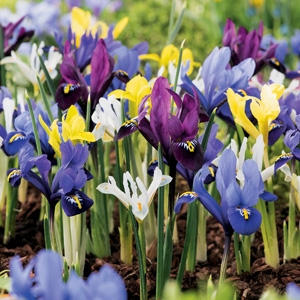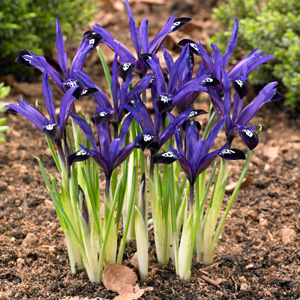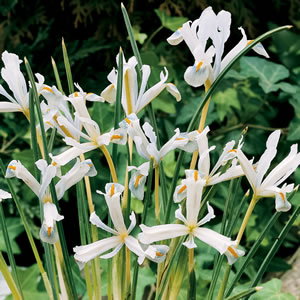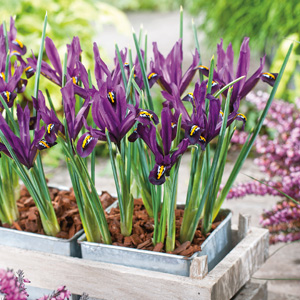Iris Reticulata Growing Guide

What is Iris Reticulata?
Iris Reticulata also known as Dwarf Iris or Netted Iris is a bulbous perennial. It is part of the Iridaceae family and is native to Eastern Europe. The name Netted Iris comes from the covering of the bulb which resembles a net. Classified as ‘Dwarf Iris’, Iris Reticulata are a fragrant dwarf species of Spring flowering Iris. The beautiful flowers emerge before the foliage and look like butterflies hovering just above the ground. The flowers, that are produced on short flower stalks, comes in the shades of pale blue to purple with white or yellow highlights depending on the variety. These flowers appear in Spring and each flower lasts between 3 to 7 days. Iris Reticulata’s leaves are short, tubular and strap like that look very similar to tall grass. They need a full sun position in the garden however will grow well in part shade with a slightly alkaline well-drained soil. These plants are drought tolerant and they need a cold Winter to promote the best growth in Spring.
Benefits of Growing Iris Reticulata
Iris Reticulata are a very low maintenance bulb that are perfect to add colour to your garden at the end of Winter. Ideal to be planted as borders, in rockeries, pots, and patio displays. A mass planting in a wide pot will give a stunning display in Spring. Iris Reticulata make excellent cut flowers and can be used in wedding bouquets. Their bulbs will naturally multiply and can eventually be divided.
How to Grow Iris Reticulata
Climatic Zones
Suitable to all climates except tropical. Grows best in cool to cold climates but will tolerate warmer areas.
Plant Size
Height: 15cm, Width: 5cm
When To Plant Iris Reticulata
Plant in Autumn.
Soil Preparation
They like well drained humus rich soil that is slightly alkaline (Neutral is fine). Check the pH of your soil. If it’s not neutral or slightly alkaline then you will need to add lime to your soil. Do not use manure as this will lower the pH of the soil.
How To Plant Iris Reticulata
Plant in full sun or part shade, 5cm apart with the bulb planted at a depth of 5cm below the soil surface.
Iris Reticulata Plant Care
In areas that do not receive adequate Winter rainfall, water well after planting and water occasionally until foliage and flowers emerge. Ensure plants receive adequate water during the growing season, but once they die down and go into dormancy the bulb does not require any water at all. Like all bulbs, Iris Reticulata rots easily if over watered or if soil is too heavy and poorly drained.
If the soil has been well prepared fertilising isn’t necessary. If soil is of poor quality blood and bone can be applied after leaves begin to emerge.
Bulbs may be left undisturbed for years. If lifting bulbs is required, do so once the foliage has died down completely and store in a warm and airy position. It is important to let the foliage die back naturally as this allows the bulbs to store energy for the next season.
Watch for aphids as the weather warms up.
Recommended Iris Reticulata Varieties
Iris Reticulata are another no fuss style Spring bulb that displays a gorgeous slight fragrant flower.










